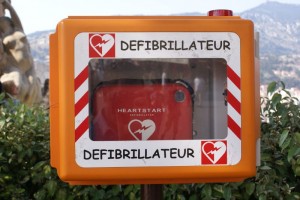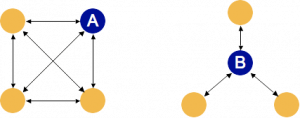Swift Trust, much like it sounds, is the concept of rapidly coming to intra-team trust. A doctor friend of mine who introduced me to the term, explained it with the context of the ad hoc team of MDs and nurses responding to a cardiac arrest, a code blue.
 I have been thinking about this throughout a book I am reading now, Honest Signals, by Alex (Sandy) Pentland from the Human Dynamics group of the MIT Media Lab. In it, Prof. Pentland discusses physiological social signaling, and one point particular to swift trust stood out: with great accuracy, one can predict behavioral outcomes using a “thin slice” of observation. One study was able to predict six-year marital success based on just the first three minutes of a marital conflict. There are many more studies showing similar success including job interviews, therapist competency ratings, and courtroom judges’ expectations of trial outcomes. My guess is there are things about the crash cart scenario which take advantage of this.
I have been thinking about this throughout a book I am reading now, Honest Signals, by Alex (Sandy) Pentland from the Human Dynamics group of the MIT Media Lab. In it, Prof. Pentland discusses physiological social signaling, and one point particular to swift trust stood out: with great accuracy, one can predict behavioral outcomes using a “thin slice” of observation. One study was able to predict six-year marital success based on just the first three minutes of a marital conflict. There are many more studies showing similar success including job interviews, therapist competency ratings, and courtroom judges’ expectations of trial outcomes. My guess is there are things about the crash cart scenario which take advantage of this.
Some thoughts about this applied to code blue teams:
- the roles are well defined, so the amount of politicking is reduced
- time pressure pushes you to trust your colleagues, as there is little other choice
- the desired outcome is constrained, so you are only asked to trust in this specific situation
- trust develops rapidly with success
- trust develops when you don’t have a choice about the team over the long term. (time frame is short, so don’t know if this comes into play).
If these are right, here are a few predictions about the crash response process:
- there are a number of quick steps taken as a group before administering to the patient. That would help establish some trust right at the beginning.
- the team members know each other at least by reputation, that goes a long way to giving the benefit of the doubt.
- the outcome is critical, so everyone is pushed to excel. This works in the the trust/success feedback loop.
- team members talk about crashes with their non-team colleagues. this helps the reputation feedback.
Are there any MD’s or RN’s out there who care comment? I have only the most cursory knowledge about the way the team is conducted, not to mention the actions team members take. Does this fly?
[Photo credit: Simon]
